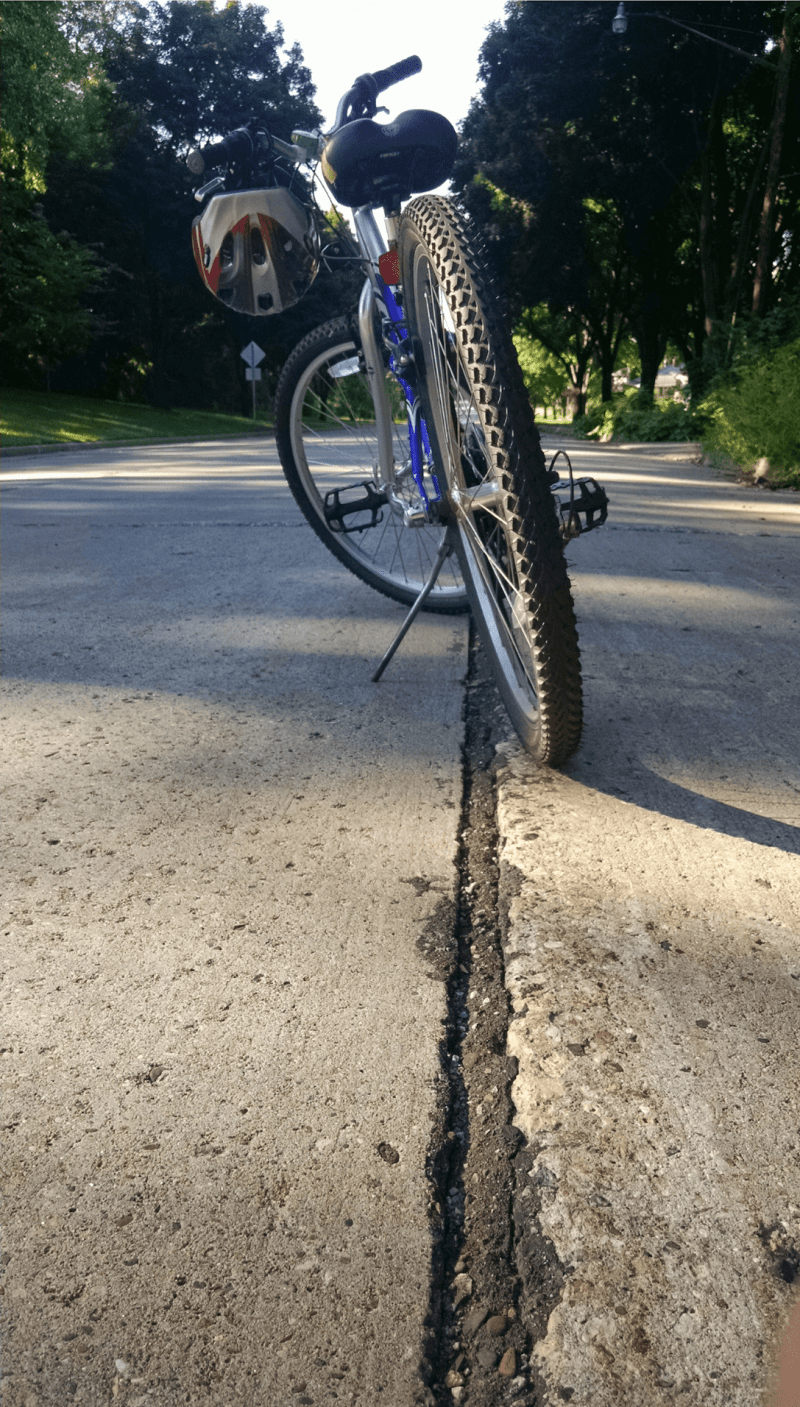Coord invites cities and other curb managers to apply for its Digital Curb Challenge to undertake a free curb management pilot program in 2020. Applications close on Feb. 14. Click here for information.
Local leaders often have no idea how bad streets really are for their non-driving constituents. But to quote the planet's oldest cliche, a picture is worth a thousand words — and a good picture can motivate an apathetic streets department worker to break out the blacktop repair mix.
Writer Drew Ross has a background in photography and journalism, and he shared some great tips at Streets.MN about how to take a pothole photo that really grabs an apathetic politician's attention. "A photograph conveys a lot of information: perspective, proportions, scope, and emotion," Ross said. "In a world heavy with reports and plans, photographs are a welcomed relief."
Here are a few of his best tips on how to raise awareness and help get those potholes filled. (Or if you're impatient, have a little money to spare, and don't mind risking a little trouble...the fine folks at PBS made you an excellent guide on filling potholes yourself. Just sayin.')
1. Outline it
Ross didn't actually break out the spray paint to take this picture — the staff of a local bike race did to warn riders of hazards. But there's nothing to stop you from doing it; spray chalk is cheap and doesn't violate most cities' graffiti laws.
2. Scale it
Throwing a ruler into your pothole for scale, as Ross did in his first photo, is a good strategy. But you know what's even better? Showing that your roadway hazards are four times the size of a human skull.
3. Get the angle
"This photo caused people to gasp," Ross said, and it's not hard to see why. When you get low and shoot with an eye to really showing the depth of a pothole, not just the breadth, it's more obvious just how easy it would be to snag a tire in one of these things.
4. Dramatize it
Someone who doesn't ride a bike might have no idea what horrors can happen when you hit a crack in the pavement that runs parallel to the path you're riding. Show them, though, and voilà: they get an instant mental image of a cyclist flipping their handlebars — and a stronger incentive to get that thing filled.
5. Skip the people
Your first instinct might be to put a human face on your city's pothole problem. But Ross points out that personalizing a photograph can distract left-brainy engineers from the simple technical problem they need to solve. This photograph makes the that issue crystal clear: this seam in the road is wide enough to grab this mountain bike tire. Better fill it.
However you photograph your pothole, don't keep it to yourself. Drop a pin so your streets department knows exactly where that sucker is. Follow your city's official process for reporting roadway hazards, yes, but then tag that councilperson of yours on Twitter, too. Don't be afraid of making noise and demanding the safe roadway you deserve.
And if you don't get a response, maybe steal a page from this hero's book and make yourself a sign: "The person who didn't fill this pothole is an asshole."







